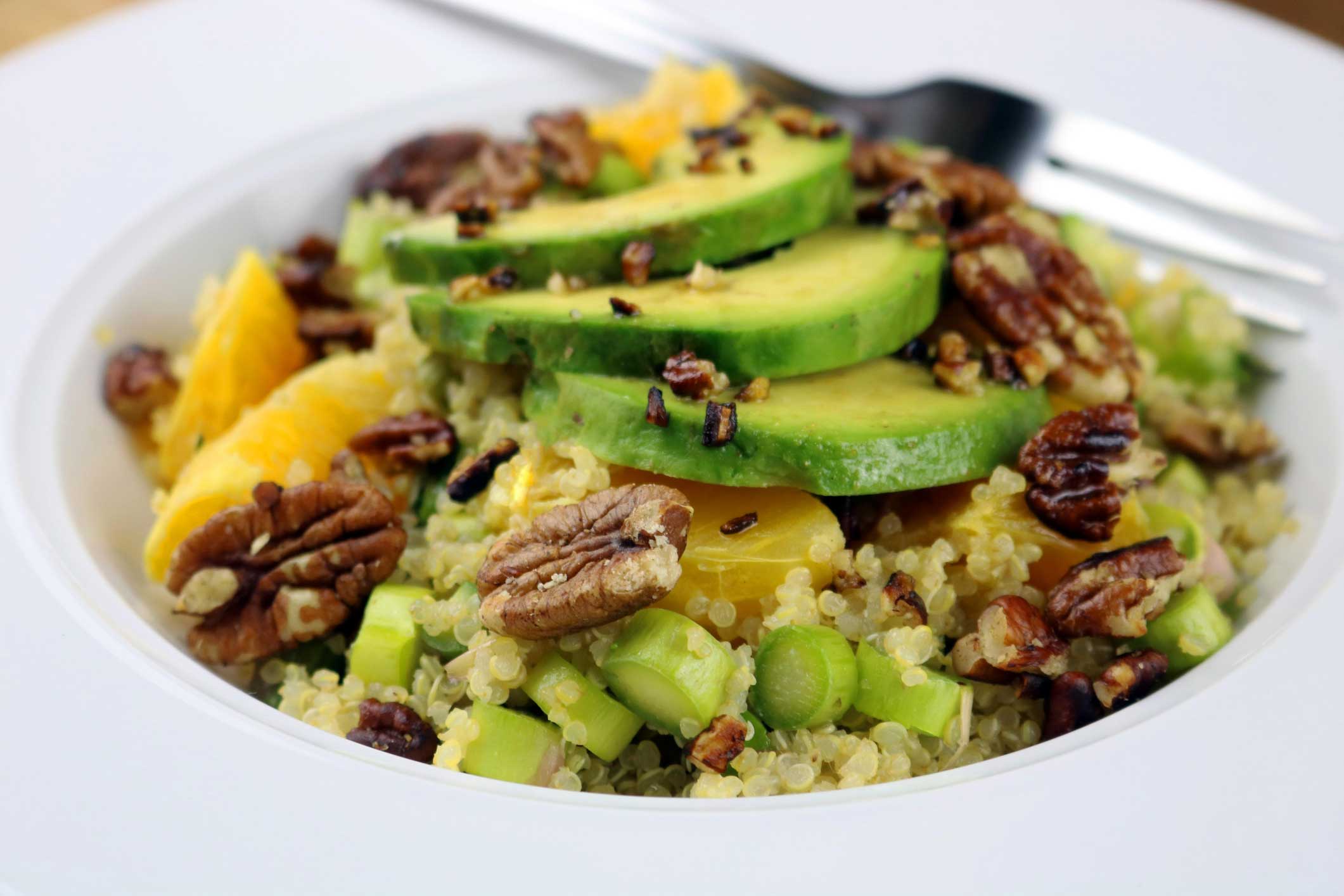Revitalize your spring meal routine with ancient grains and seeds.
Thousands of years ago whole grains and seeds were a vital part of the food supply in ancient cultures. The ancient grains buckwheat and millet are native to Asia, quinoa, amaranth, and chia seeds are from South America, and flaxseed, bulgur, farro and kamut are from Ancient Egypt.
Ancient grains and seeds provide more fiber, protein, minerals, B vitamins and phytonutrients (molecules that fight disease and inflammation) than most of their modern cousins. In fact, current research indicates that whole grains and seeds are packed with an array of nutrients that can help improve cholesterol and triglyceride levels, reduce inflammation, promote satiety, and improve blood glucose control.
Ancient grains and seeds are quickly gaining popularity as the building block for satisfying and nutritionally balanced dishes guaranteed to add zest to your spring meal plan without adding inches to your waistline.
Before you begin experimenting with recipes here are some answers to frequently asked questions, and tips for cooking with ancient grains and seeds.
Which ancient grains and seeds are gluten free? Amaranth, buckwheat, flaxseed, chia seed, millet, quinoa, sorghum and teff.
Which ancient grains contain the most protein? Quinoa and amaranth are considered to be complete proteins because they contain the amino acid lysine, which most plant proteins lack. This makes these ancient grains smart choices for vegans.
Which is better, chia or flaxseed? Chia and flaxseed are both rich in heart healthy omega-3 fatty acids and soluble fiber. Because of its lignin-rich outer layer flaxseed must be ground into a powder so that we can absorb the beneficial nutrients inside. Chia seed can be eaten whole and makes a yummy breakfast bowl.
Are ancient grains economical? I call them a bang-for-your-buck food. They are significantly cheaper than meat and fish, yet they are rich in protein and an array of phytonutrients that stave off chronic disease.
What is the right liquid-to-quinoa cooking ratio? Quinoa is naturally very mild in flavor, so I recommend using 1.5 cups of a flavorful cooking liquid like sodium mushroom, chicken or beef stock for every cup of uncooked quinoa. For best results, bring the cooking liquid and quinoa to a boil over medium heat, stir once, reduce the heat, cover and simmer for 15 to 20 minutes. The quinoa is ready when it is slightly translucent and a little tail appears. Set, covered, for 10 minutes and fluff with a fork. This ratio creates a slightly chewy and fluffy texture.
Why is my quinoa not fluffy? If the quinoa is stirred while it cooks it will have a porridge-like consistency. To avoid this, stir just once, set a timer and walk away from the stove. It will be fine…really!
Why does quinoa taste bitter? Quinoa is actually a seed that has a thin outer skin. The skin contains saponins, phytochemicals that have a bitter or soapy flavor. To eliminate the bitterness, rinse the quinoa thoroughly before cooking it. Measure what you need for the recipe into a bowl, cover with water, swish, drain and repeat until the water is clear. Pre-rinsed quinoa is also available at the grocery store. Another way to reduce the bitterness, is to gently toast uncooked quinoa in a dry skillet stirring constantly just until it is fragrant.
Can I cook quinoa in a rice cooker? Yes! This is a no-fuss method for cooking many grains not just rice. Simply follow the instructions on the appliance for cooking time and liquid ratio.
How do I make a balanced flavorful meal with ancient grains? Is there a recipe you recommend? Make a grain bowl. This versatile dish comes together quickly and is a great way to use up leftovers. To create a balanced meal, I add enough roasted or steamed vegetables to equal half the volume of the cooked grain. I also set out bowls of healthy toppings such as: hard boiled eggs, cooked chicken, black beans, avocado slices, chopped nuts, extra virgin olive oil and lemon wedges so family and friends can build their own signature dish.
The key is to have fun with it, use your favorite seasonings and consider adding dried or fresh fruit for a burst of flavor. This “Delicious Big Bowl” is one of my favorite recipes.
Brenda Viens is a Community Life Skills Dietitian for Backus Hospital and Thames Valley Council for Community Action. Email her at Brenda.Viens@hhchealth.org.

